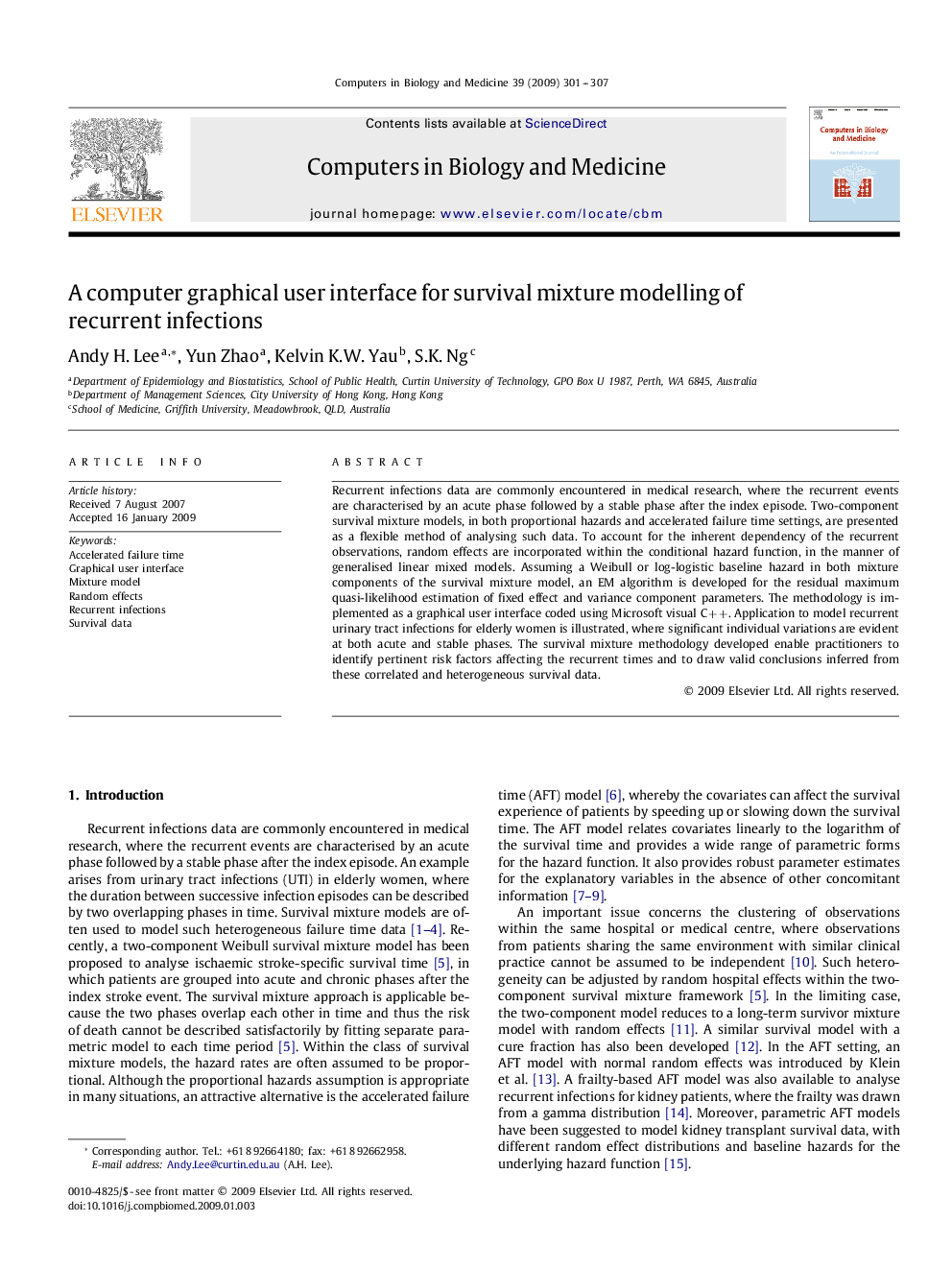| Article ID | Journal | Published Year | Pages | File Type |
|---|---|---|---|---|
| 506070 | Computers in Biology and Medicine | 2009 | 7 Pages |
Recurrent infections data are commonly encountered in medical research, where the recurrent events are characterised by an acute phase followed by a stable phase after the index episode. Two-component survival mixture models, in both proportional hazards and accelerated failure time settings, are presented as a flexible method of analysing such data. To account for the inherent dependency of the recurrent observations, random effects are incorporated within the conditional hazard function, in the manner of generalised linear mixed models. Assuming a Weibull or log-logistic baseline hazard in both mixture components of the survival mixture model, an EM algorithm is developed for the residual maximum quasi-likelihood estimation of fixed effect and variance component parameters. The methodology is implemented as a graphical user interface coded using Microsoft visual C++C++. Application to model recurrent urinary tract infections for elderly women is illustrated, where significant individual variations are evident at both acute and stable phases. The survival mixture methodology developed enable practitioners to identify pertinent risk factors affecting the recurrent times and to draw valid conclusions inferred from these correlated and heterogeneous survival data.
